Ten Fascinating Moons of the Solar System
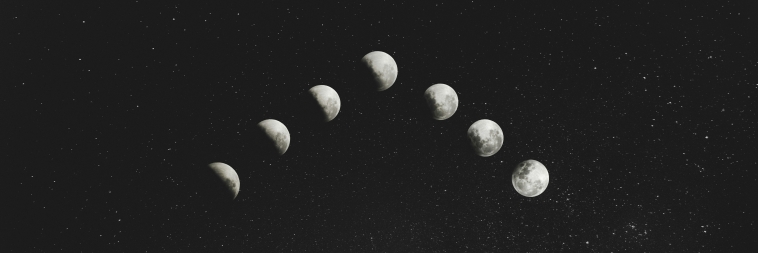
In this article, we’ll take a closer look at ten fascinating moons of the solar system, exploring their unique features, planetary relationships, and potential for harbouring life.
When we think of our solar system, it’s easy to fixate on its big-name celebrities – the Sun, our brilliant centrepiece, and the grand planets revolving around it. But every hit show has its understudies that, while perhaps smaller, hold every bit as much intrigue. Enter the moons of the solar system.
These little worlds in the night sky aren’t just satellites – they’re staging grounds for fascinating scientific discoveries, including complex topographies, unique atmospheric compositions, and even the potential for life beyond Earth. So, join us on a trip through the solar system to take a closer look at what we think are the ten most exciting solar system moons.
Moons of the Solar System – Honourable Mention: Our Moon!
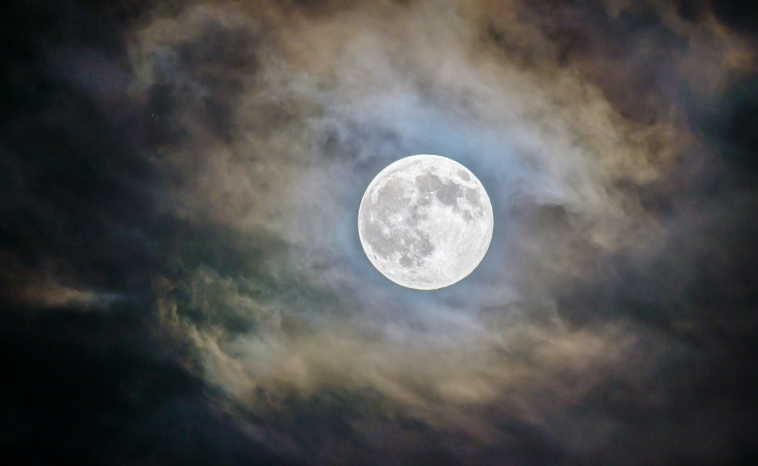
While we want to use this article to take the opportunity to discuss some of the more distant moons in our corner of the galaxy, we couldn’t possibly forget about our own cosmic companion!
With its almost hypnotic silvery glow, the Moon is absolutely essential for life on Earth. It orchestrates the tides, stabilises our climate, and guides the natural rhythms of our planet’s countless species. Its rugged surface has been marked by craters and scars, telling a violent story of ancient impacts.
The Moon has kindled human curiosity and imagination for millennia, inspiring art, literature, and the irresistible urge to explore. Indeed, our lunar voyages in the 20th century marked a “giant leap” for our civilisation, not just in space travel but in our understanding of what it means to be human.
Our List of the Ten Most Fascinating Moons of the Solar System
From icy oceans with the potential to harbour life to erupting volcanoes that light up the darkness of space, these moons are teeming with mysteries. Without further ado, allow us to guide you through some of the sensational satellites that orbit our neighbouring planets.
1. Titan
When it comes to moons, Titan is… different. Different enough to make you wonder if it’s not just a little too close to being a planet for us not to consider it one itself. A shroud of thick orange haze clouds its surface, a harbinger of an atmosphere denser and richer than our own. So what’s under this veil?
Findings from the Cassini mission showed us a world with dunes, mountains, and actual lakes—albeit lakes of liquid methane. Could this curious mix of Earth-like features set the stage for some form of non-terrestrial life? Scientists certainly think it’s a possibility, meaning Saturn’s largest moon, Titan, continues to amaze us with its potential.
2. Enceladus
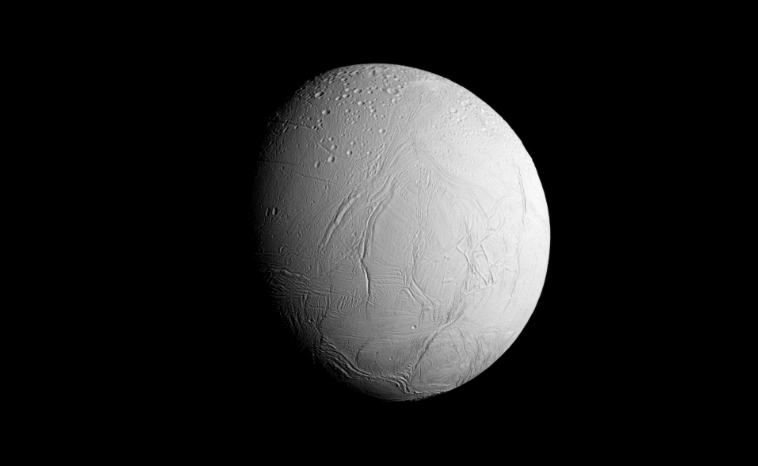
CREDIT: National Aeronautics and Space Administration (NASA) / Jet Propulsion Laboratory (JPL)
Saturn’s sixth-largest moon is a cold and icy world known for its geysers, which spew water vapour and ice into space. These plumes come from a hidden ocean beneath the surface and have been sampled by NASA’s Cassini probe, revealing organic molecules that could be vital for life.
How deep is the subsurface ocean? Could it be home to any form of life? Hopefully, the answers will unveil themselves in the future. Enceladus has quickly become a leading candidate in the search for alien life, but for now, this tiny yet magnificent moon remains an enchanting mystery.
3. Europa
Similarly to Enceladus, our third entry is another moon with a subsurface ocean. Jupiter’s sixth-largest satellite might not be as flashy as some of its neighbours, but it has one quality that makes it incredibly special: it could be the most likely place in our entire solar system for life outside Earth.
With its smooth and cracked surface, scientists speculate that Europa might be hiding a vast ocean underneath. This is further supported by the magnetic signatures observed around the moon, which indicate the presence of a conductive layer of salty liquid water.
Europa’s potential as a habitable world is further enhanced by its position in Jupiter’s magnetosphere, which protects it from the harsh radiation of space. This magnetosphere may shield any life forms living within the ocean from harmful cosmic rays and have access to vital energy sources through hydrothermal vents.
4. Ganymede
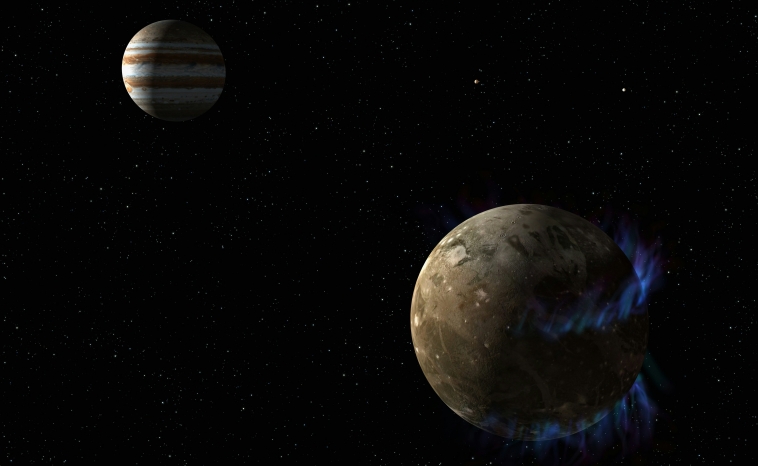
When it comes to size, Ganymede is the irrefutable king of the satellites, trumping all the other moons of the Solar system – and even our dwarf planet friends. Its surly, cratered face battles a magnetic field of its very own, a significant point of intrigue that science is still untangling.
As with many of its icy siblings, a whispered secret bubbles beneath its surface – a subsurface ocean which may hint at a soupy environment ripe for sustaining life. In fact, scientists believe it may be one of the most likely places in our solar system to find extraterrestrial life.
But beyond its potential for harbouring life, Ganymede’s sheer size and magnetic field make it an object of fascination for scientists eager to unlock its mysteries. As we continue to explore this enigmatic moon, who knows what other secrets Ganymede might reveal?
5. Triton
If the solar system is a classroom, Triton is the cool kid who sits at the back behind Neptune. In many aspects, Triton does things its own way. It’s the only large moon in the solar system with a retrograde orbit. This suggests that it was captured by Neptune, as opposed to forming alongside it.
It’s also one of the most frigid environments in our solar system, with surface readings plummeting as low as -235 degrees Celcius. And if geysers are your thing, Triton’s got you covered. The moon boasts geysers that spew frozen nitrogen frost as far as several kilometres above the surface, creating a fantastically alien landscape.
6. Io
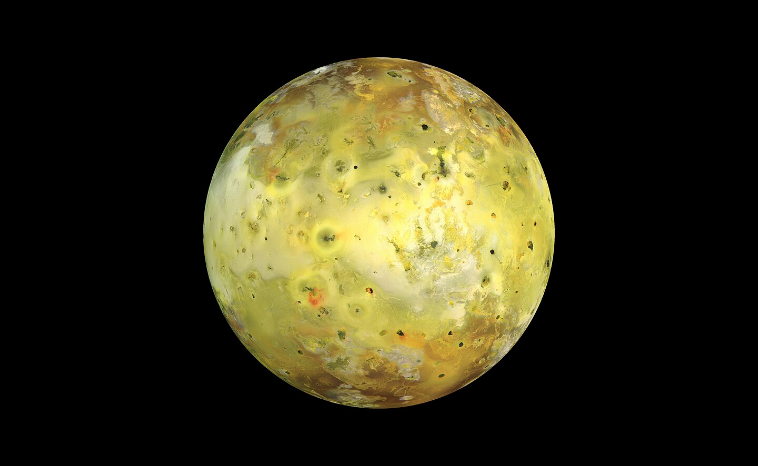
CREDIT: NASA / JPL / University of Arizona
Io is one of only four objects in the solar system that is volcanically (or cryo-volcanically) active. The other objects are Enceladus, Triton, and, of course, Earth. However, with over 400 active volcanoes lighting up its sky, this moon of Jupiter is the most geologically active body in the solar system.
Consisting of large quantities of sulphur and sulphur dioxide, these volcanic plumes can reach jaw-dropping heights, rising as much as 310 miles above the moon’s surface. The result is a visual cacophony – a world painted by bright yellows, fiery reds, and smoky blacks. Indeed, Io’s paint box is one of the more vivid in the system and, it seems, always freshly daubed by its energetic eruptions.
7. Callisto
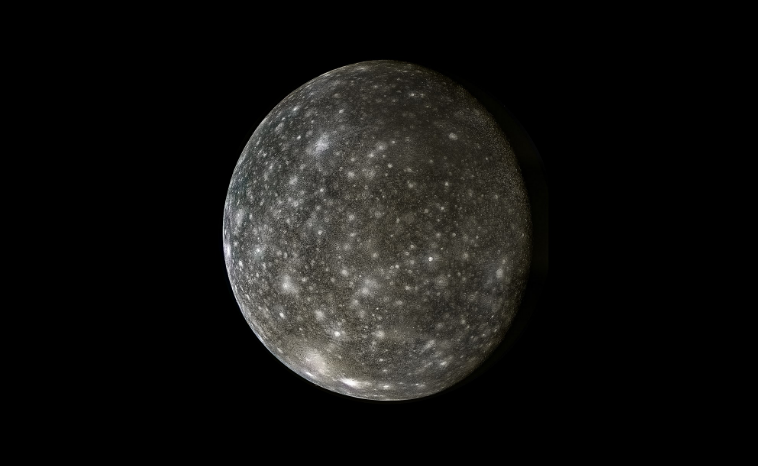
Kevin Gill from Los Angeles, CA, United States, CC BY 2.0, via Wikimedia Commons
Judging by Callisto’s surface, you’d think it could survive anything. The moon is not just simply cratered – it’s the most cosmically scarred of all the solar system’s bodies. The heavy cratering of this fascinating satellite tells a violent story of ancient impacts and an unwavering resolve.
However, beneath the scars and desolate frozen plains, Callisto harbours perhaps two of the most exciting hidden traits of extraterrestrial objects – a subsurface ocean, a popular item on the life-sustaining checklist, and a tumultuous past of tectonic resurfacing. As a result, Callisto is proof that excitement doesn’t solely exist above the crust. The possibilities of what we may find just beneath the surface are tantalising thoughts to ponder.
8. Miranda
Miranda, the smallest of Uranus’ five large, round moons, has an utterly unique feature – Verona Rupes. At around 20 km high, Verona Rupes is the tallest cliff in the solar system. In comparison, Mount Thor, Earth’s tallest cliff, stands at just 1,675 m. Even the 8,849 metre-tall Mount Everest is eclipsed by this massive cliff face – so watch your step if you ever happen to find yourself on Miranda! Indeed, given the moon’s very low gravity, if you did have the misfortune to fall from the top of Verona Rupes, it would take about 12 minutes to reach the bottom.
The ludicrously tall Verona Rupes might take the headlines, but it is far from the only intriguing feature of Miranda’s surface. In fact, with its ‘patchwork’ surface of distinct regions, the satellite boasts one of the most varied and extreme topographies of any solar system object. No one is entirely sure why it has such jig-sawed features. However, it’s possible that the moon was subject to a colossal collision at some point in its history, resulting in it shattering and then reassembling itself under the pull of gravity.
9. Phobos
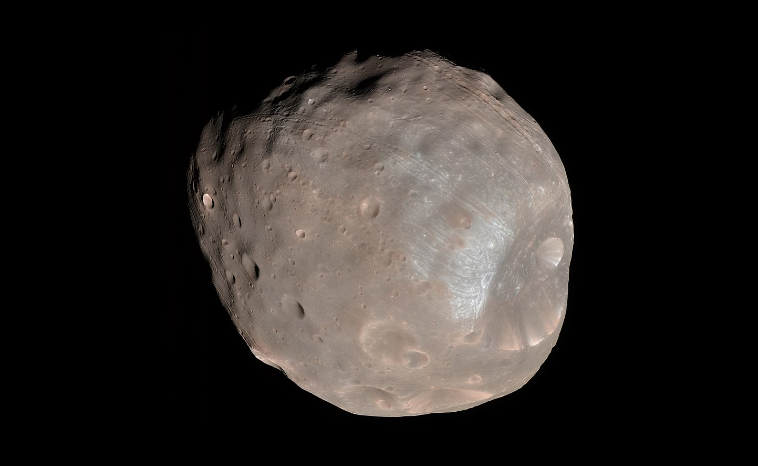
CREDIT: NASA / JPL-Caltech / University of Arizona
Would you have a moon that sets twice in your planetary day? Well, Mars does, courtesy of the dark and gloomy Phobos, a darkling piece of space rock that darts around the red planet like a nervous tick.
Named after a son of Ares and Aphrodite from Greek mythology, this moon is non-reflective and foreboding. In fact, it’s one of the least reflective objects in the solar system. Among the moon’s intriguing features is Stickney, a huge impact crater that dominates a substantial part of Phobos’ surface.
Phobos’ irregular shape hints at an alien origin. Perhaps a wandering asteroid that Mars decided to call its own. Astronomers believe the moon consists of loose rubble covered by a thin crust. Interestingly, Phobos is moving closer to Mars a small amount each year, increasing the tidal force the moon is subject to. Within the next 50 million years, scientists expect that the pull will become so strong that either Phobos will plummet to the Martian surface or tear apart, resulting in the Red Planet receiving its very own planetary ring system, like a mini Saturn.
10. Charon
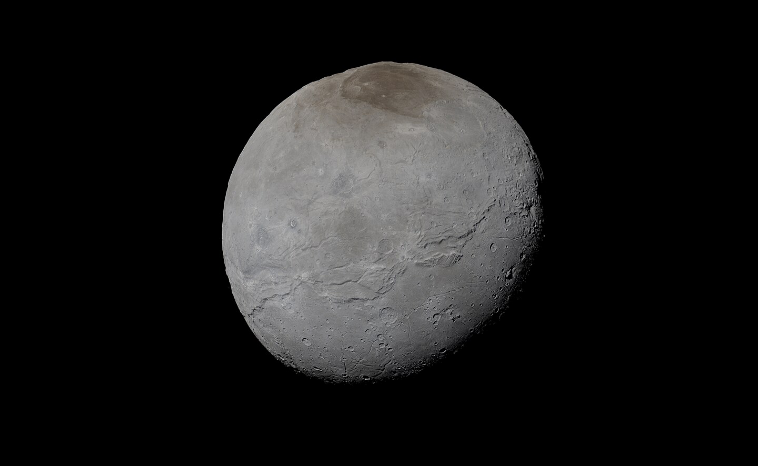
CREDIT: NASA/Johns Hopkins University Applied Physics Laboratory/Southwest Research Institute/Alex Parker
Last on our list, but by no means list, is Charon, the enigmatic moon of Pluto. At roughly half the size of everyone’s favourite dwarf planet, Charon is unusually large in terms of its moon-to-planet ratio. Indeed, the two objects are so mismatched that the Pluto-Charon system’s centre of mass lies outside of Pluto, technically making it a binary system.
In another quirk shared by this odd couple, the two objects are tidally locked, meaning they always keep the same face towards each other as they revolve around a common centre. This creates an eternal celestial dance that has captured the imaginations of astronomers ever since Charon’s discovery in 1978.
But what is perhaps most fascinating about Charon is its potential to harbour hidden secrets within its dark surface. The New Horizons spacecraft, which flew by Pluto and Charon in 2015, revealed fascinating details about the moon’s surface, including canyons and chasms that hint at an active past. Moreover, it also discovered evidence of ice volcanoes, adding a whole new dimension to our understanding of this far-flung world.
OSR Star Finder App
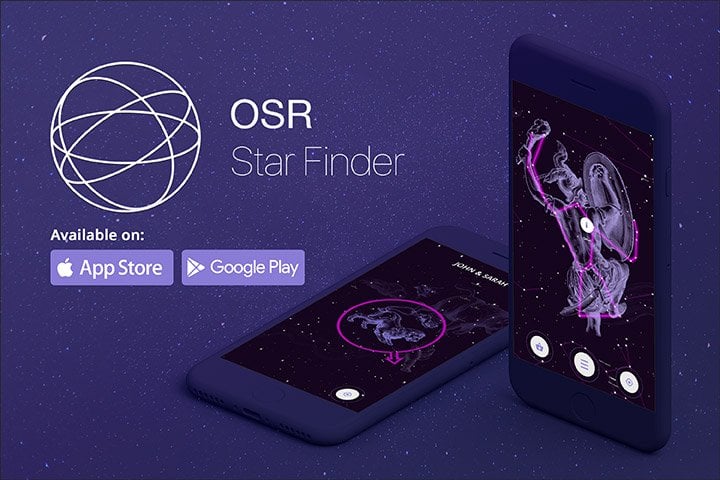
Moon or planet, it hardly matters when the story is as captivating as these ten cosmic companions. From geysers that shoot hundreds of miles into space to mountains that dominate the infinite skyline, the moons of the Solar System are undeniable marvels. Behind their masks of dust and ice lie the potential for life, the secrets of the universe, and the dreams of every stargazing soul on Earth.
But why simply read about these celestial marvels when you can locate and admire many of them in the night sky? Download the OSR Star Finder now and start exploring!
